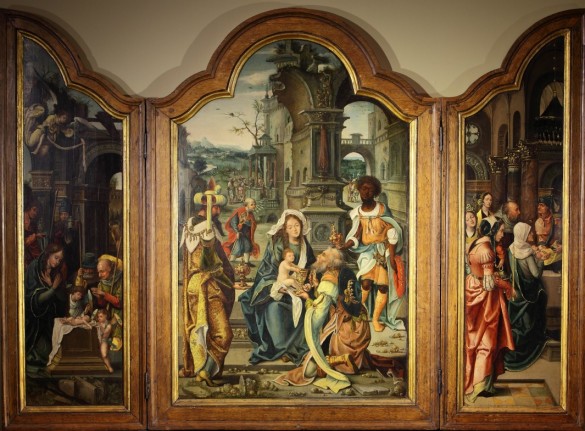
AP.1969.1.1- Triptych Altar, Pieter Coecke Van Aelst
By Angela Gonzalez, Curatorial Intern
Triptychs were used as decoration that would adorn altarpieces. The ornamental artworks would serve the public as a visual aid for devotional ceremonies. Due to high illiteracy rates, triptychs also assisted in presenting the stories of the Bible for those who were unable to read. The church would commission artists and request certain scenes from the Bible to be presented. These would typically read as a narrative. The Triptych Altar consists of scenes from Christ’s infancy.
On the left panel, the Nativity scene is depicted. Centrally located, the Christ child is laying on a white cloth surrounded by Mary, Joseph and various other onlookers. The group is situated under a barrel arch which is reminiscent of Roman architecture. The central panel, which is the largest, depicts the Adoration of the Magi. The Christ child sits upon Mary’s lap receiving gifts from the three wise men. In the background are more architectural structures and in the distance is a misty landscape. The right panel depicts the Presentation at the Temple.
The fascinating aspect to the Triptych Altar is the hidden symbolism. For example, the crumbling Roman architecture is representative of the fall of Paganism and the rise of Christianity. Moreover, in each panel, tiny details are included which are used to legitimize the overall message of the painting. At the top of the central panel, a sculpture of Abraham and Isaac rest on the top of a column. The inclusion of the Old Testament father and son is used as foreshadowing for the sacrifice of Christ. It is the small details to this painting that reinforce how important it is to take a second look and inspect all the details.


